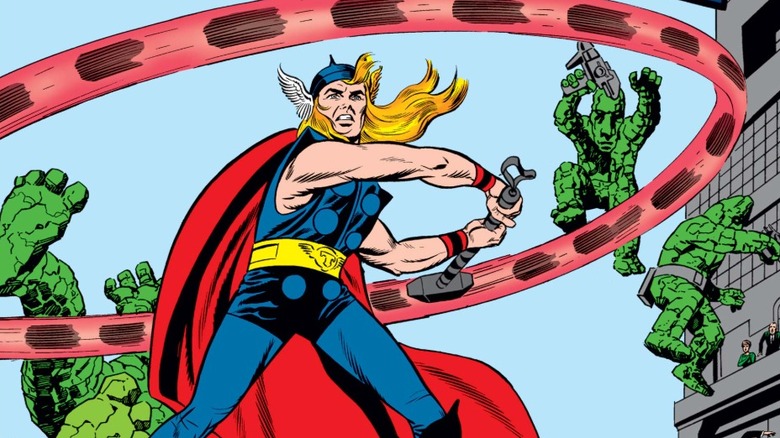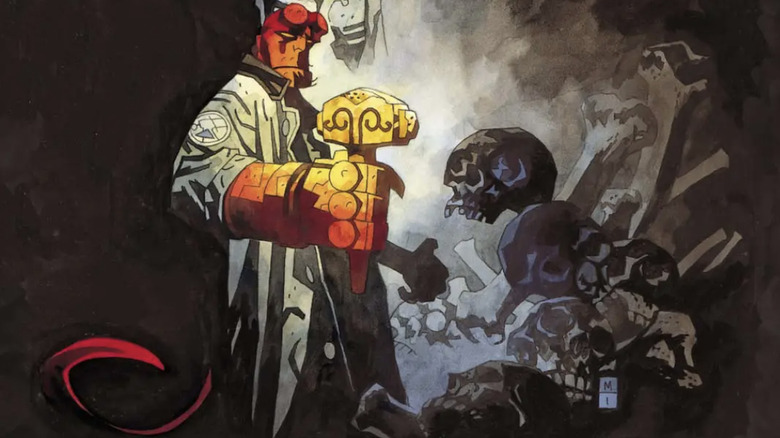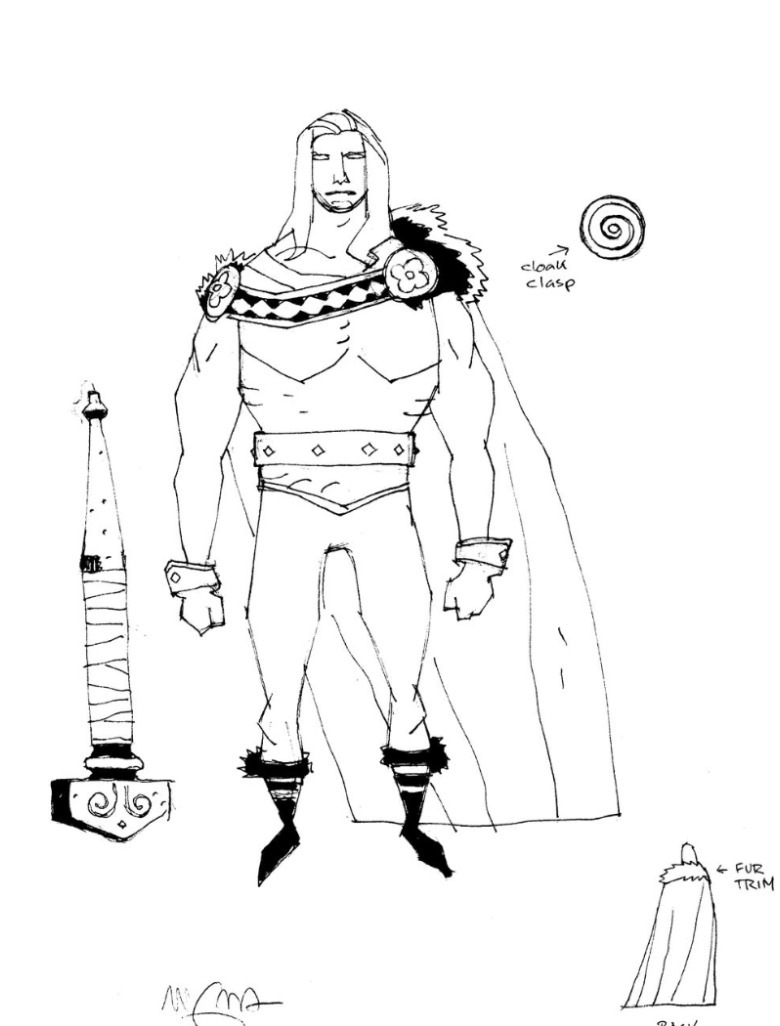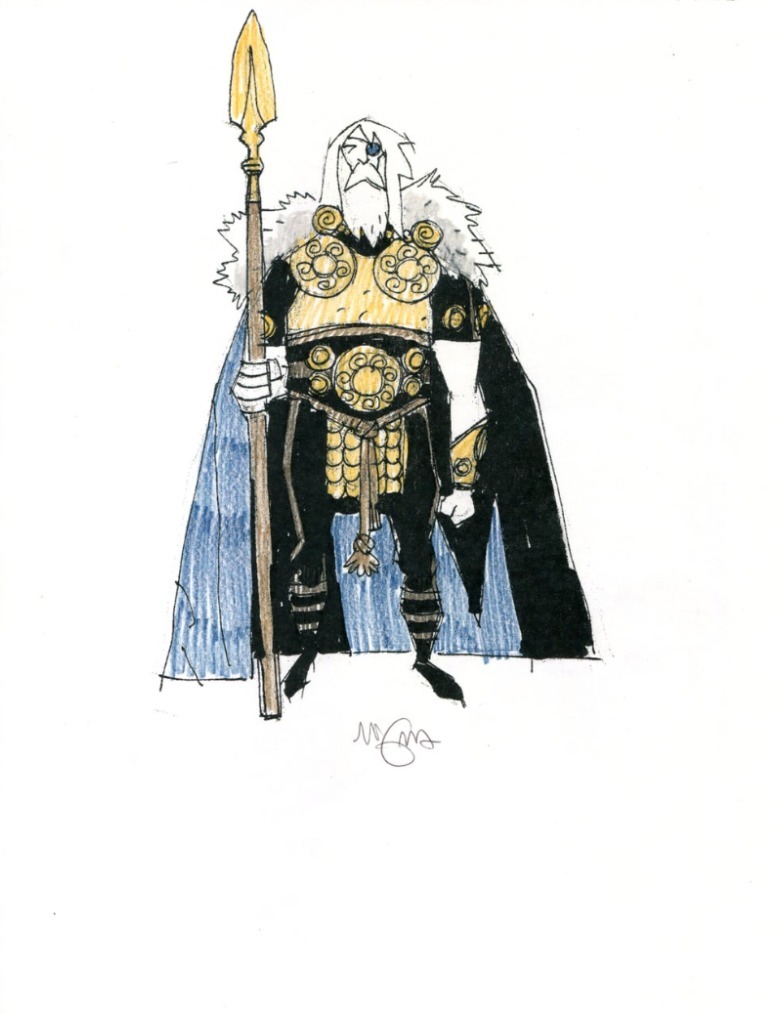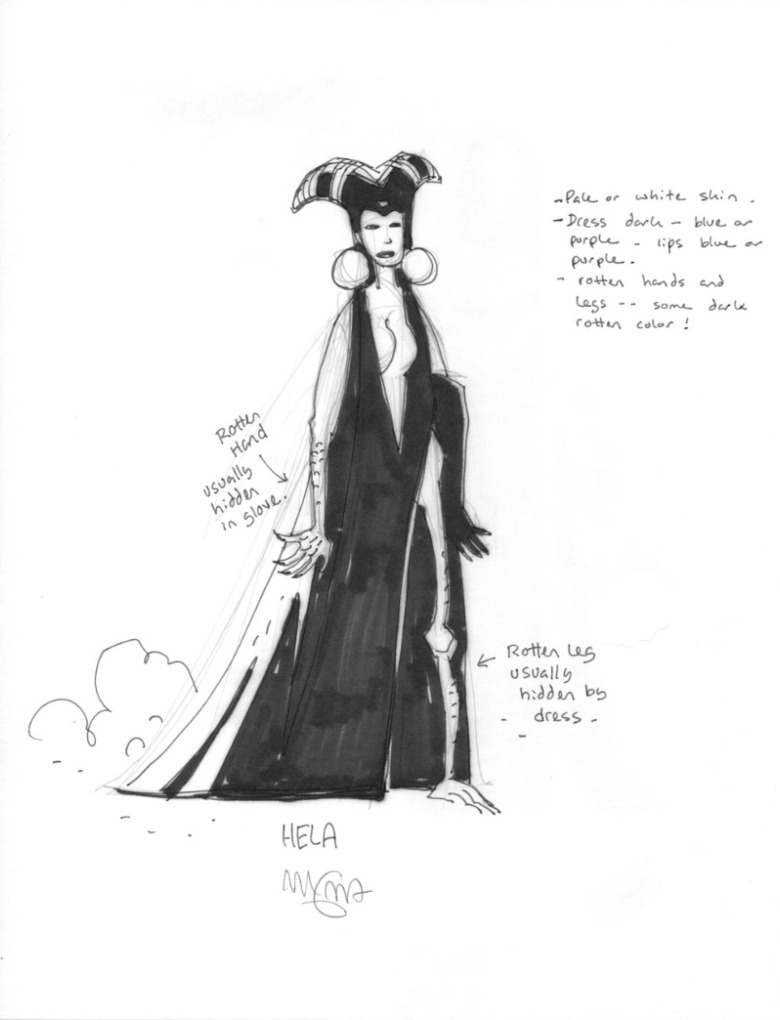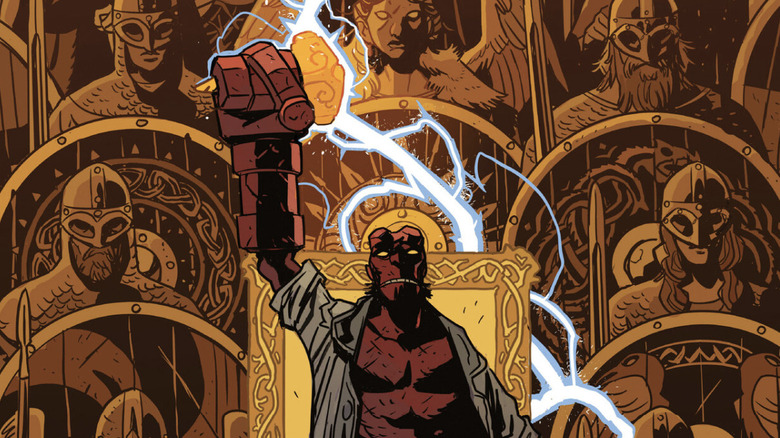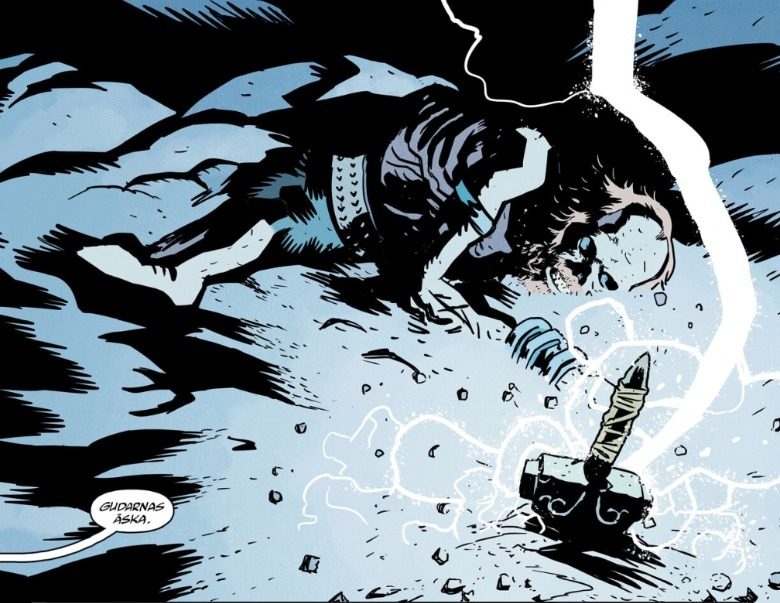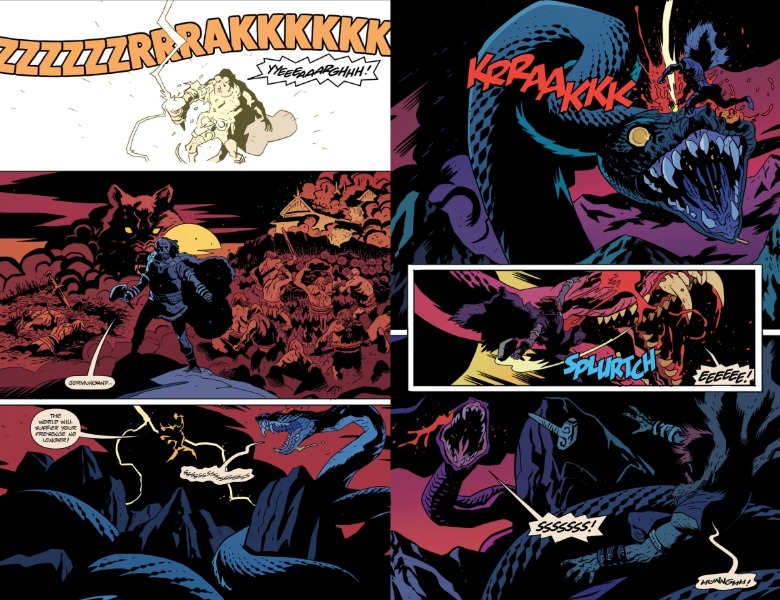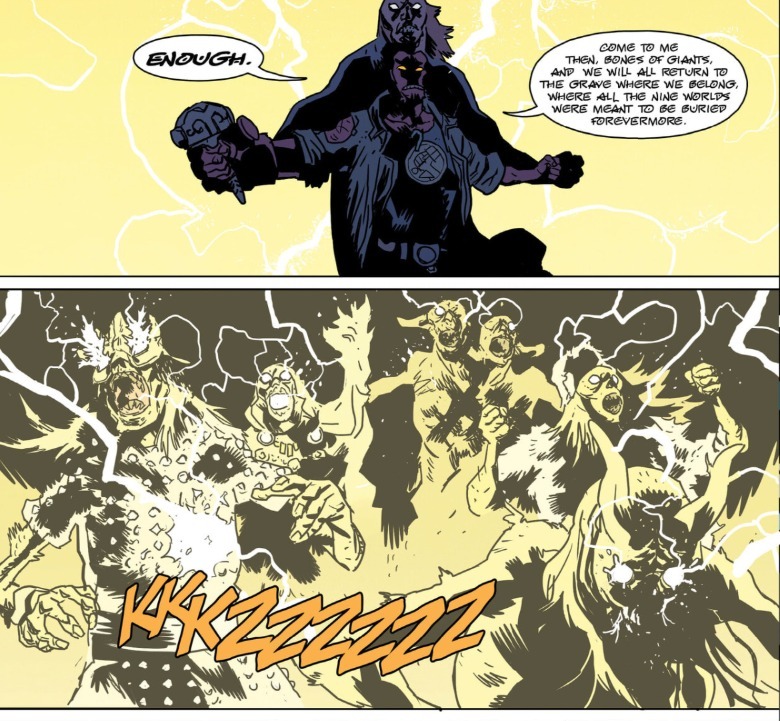A Canceled Thor Cartoon Would Have Completely Reimagined The Marvel Hero
We may receive a commission on purchases made from links.
Lots of Marvel Comics heroes got to star in cartoons during the 1990s (most famously the X-Men, who returned last year in "X-Men '97"), but not the Mighty Thor. The Thunder God didn't even appear in the "Power Rangers" inspired (and swiftly canceled) "Avengers: United They Stand."
However, in the late 1990s, there actually was a Thor cartoon in development — just not about the Thor who Marvel fans are familiar with. One of the men involved was prolific cartoon writer Henry Gilroy. As Gilroy tells it, he met famous model Fabio Lanzoni by chance. When he learned Gilroy worked in animation, Fabio's interest piqued. Fabio had previously done a Thor costume fitting for Stan Lee, who had been hoping to sell a Thor TV series. That experience made Fabio want to actually play Thor, in a cartoon and then a movie.
Gilroy and animation director Seth Kearsley ("Mummies Alive!") envisioned a Thor based more on original Norse myths than the Marvel Comics. Character designs were drawn by Mike Mignola, the comic artist most famous for creating Hellboy and the enormous shared universe around him, and Glen Murakami, future creator of "Teen Titans."
Enter "Thor: God of Thunder," which had a two minute pilot short produced — and nothing else. The short is available to watch on Kearsley's YouTube channel.
Again, this wasn't quite Marvel's Thor, as you can see from it being set in medieval times. The mix of history and fantasy evokes "Mummies Alive!" (but with Norse myths, not ancient Egyptian ones). The medieval Europe setting is also similar to Disney's "Gargoyles," which had just wrapped in 1997.
However, the premise of Thor being cast out of Asgard to learn humility does suggest the Marvel Thor comics readers or MCU watchers would. In the original Stan Lee/Jack Kirby comics, Thor was banished from Asgard for his arrogance. Living as the human doctor Donald Blake, he could only become Thor when holding Mjolnir. "God of Thunder" would've used this backstory for Thor (voiced by Fabio), but him being a child when not in god form suggests another lightning-themed comics hero: Billy Batson/Captain Marvel.
When interviewed for the documentary "Mike Mignola: Drawing Monsters," Gilroy shared some of Mignola's concept sketches for "Thor: God of Thunder." ("Mike was excited because I was going to pay him to draw giants and monsters.") This became its own mini-documentary, available to watch below:
How Thor and Norse myths influenced Hellboy
Characters who Mignola designed included Thor himself, Odin (who was apparently set to be voiced by Charlton Heston), and the Goddess of Death, Hela. Rather than the elaborate green headdress of Kirby's Hela, Mignola's would wear a cloak — to conceal that she's half-dead underneath it.
"A lot of people in animation saw Mike's designs as cold, or too harsh because of angular body parts, they're not realistic enough or soft and cartoony enough," said Gilroy. "Animation in the late '90s was, the characters were round, they're exaggerated, they're not minimalist. And Mike is a genius at minimalist design."
Mignola has dipped his toes into animation since. He worked as a production designer on underrated Disney epic "Atlantis: The Lost Empire," which is still the greatest attempt at applying motion to his art style. His biggest legacy is definitely in comics, though, and you can see some influence from Thor (both the Norse and Marvel versions) in Hellboy's adventures.
"Norse mythology was always my favorite because they're the best monsters," Mignola has said, and he would know because of his massive collection of fairy tale and folklore books (glimpsed in "Drawing Monsters"). Mignola drew a lot of those Norse monsters for "Thor: God of Thunder," from giants to dwarves to trolls.
"Hellboy" pulls together myths from every corner of the globe, Scandinavia included. Take the short story "King Vold," which features Hellboy visiting Norway to meet the titular ancient horseman who carries his own head. Vold's design suggests "The Legend of Sleepy Hollow," but Mignola says his main influences were two Norse myths: "'The Flying Huntsman (headless King Volmer and his hounds) and 'The Green Giant' (dead mermaid and burning gold coins)."
There's some Norse mythical influence baked even deeper into "Hellboy." The Nazi occult-science project that summoned Hellboy to Earth in 1944 was called "Project Ragna Rok," as in the twilight of the Norse Gods. But in those same myths, the destruction of Ragnarok is merely a prelude to a new world.
Hellboy: Bones of Giants teams him up with Thor
"All my major villains [...] have sort of been on the side of evolution — moving the world forward towards its destruction, making a rebirth possible," Mignola has said. "The whole destruction of this world to make way for the next is lifted right out of Norse mythology — Ragna Rok."
In 2001, Mignola wrote the illustrated novel "Hellboy: Bones of Giants" with Christopher Golden. Twenty years later, Mignola and Golden turned the story into a four-issue comic book, with art by Matt Smith.
In both tellings of "Bones of Giants," Thor's ancient body is discovered in Sweden. The Bureau for Paranormal Research and Defense (B.P.R.D.) sends Hellboy and Abe Sapien to investigate. Hellboy picks up Mjolnir and it gets bound in the grip of his Right Hand of Doom, unable to be dropped or removed. Through the hammer, the spirit of Thor possesses Hellboy and we see flashes of Ragnarok, including him defeating the Midgard Serpent.
Mignola reused his design for Mjolnir from "Thor: God of Thunder" for the hammer's appearance in "Bones of Giants." The haft is shorter in "Bones of Giants," but the hammer head's shape and markings are almost identical. Speaking of, those bones belong to Norse Giants of Jotunheim. In the climax of the story, Hellboy/Thor destroys the giant king with a lightning strike, then a Valkyrie comes down to take Thor's spirit away.
If Hellboy can wield Excalibur (as he does in "The Storm and the Fury"), then why not Mjolnir? He looks like a devil, but he's on the side of the angels, and always turns away from his apocalyptic destiny. The Mjolnir in "Bones of Giants" doesn't have the "worthiness" barrier to wielding it that the Marvel Comics one does, but Hellboy should still qualify as worthy — if not by nature, then definitely through nurture.
The way Mike Mignola depicts the world of Norse mythology in "Bones of Giants" is delightful, but I'm still sore that we were this close to a full-on "Thor" cartoon made in his style.
